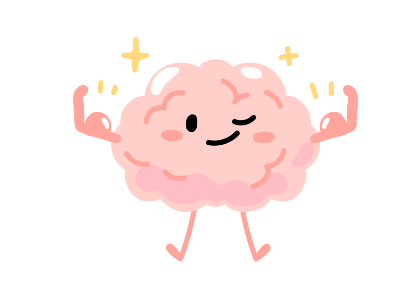August 21, 2024
It’s hard to know how to help your child with their schoolwork at home, especially math. And story problems? You’d probably rather pull your hair out.
If you’re like many caregivers, you look at your child’s homework and think “This isn’t how I learned math.” Or you hear “That’s not how my teacher told me to do it.” You end up frustrated and so does your child.

If you’re a teacher, you struggle with telling caregivers how they can support their children at home. Your students come back to school using strategies their families were taught in school. While you know everyone is doing the best they can to help, you see the confusion this sometimes creates.
If this sounds familiar to you, keep reading. Here are 3 practical tips that will help you bridge the gap between home and school and make math homework a more pleasant experience. Find out how to:
- focus on problem solving, not answer getting
- help your child make sense of what they are being asked to do
- build confidence and encourage a growth mindset
Understanding the shift in math education
Before we dive into these tips, it’s important to understand the shift in how math is taught today. Because many of us were taught math by memorization of formulas, this “new way of doing math” feels like a foreign language. We may even have learned to dislike math ourselves. Let’s talk through a few examples.
You may have heard the terms conceptual vs procedural being thrown around. It’s the idea of understanding concepts vs learning procedures. Instead of vs, I like to think of it as “and”.
Think about learning to read. Yes, kids need to learn skills like how to sound out a word. But if that’s all they ever learn, they won’t know what to do when a word doesn’t follow the rule. And they definitely won’t understand what they’re reading.
The same is true in math. Your child may be able to count past 100 but that doesn’t mean they have an understanding of what any of those numbers actually mean. How many times have you heard a little kid sing their ABCs and lump “lmnop” together? They don’t yet understand that each of those symbols has a distinct meaning.
When you throw number stories into the mix, it becomes a new struggle. Kids have to apply what they know in context. We’re asking them to make sense of both reading and mathematics. No wonder it’s such a challenge!
So, with this new perspective in mind, how can you help your child with math at home?
Focus on problem solving, not answer getting
When we praise students for getting an accurate answer, we are teaching them that math is about right or wrong, not sense-making. Think about how many times you’ve come across a word you’ve never seen before in a book. You may not know how to pronounce it, but you can make sense of it within the context of the story. This makes you a much more proficient reader than someone who can pronounce it correctly but has no clue what it means. Here are a few ways you can translate that idea to helping your child with math. Have them:
- Show their work
- They can draw a picture, act it out, or use manipulatives. For example, if they’re adding 4 + 3, they can get 4 pennies and 3 pennies and then group them together to form the total.

- Explain their thinking
- How did you get that?
- What did you do first?
- Why did you do that?
- What do you think you might need to do next?
It might sound like this, “I see you found the solution to 21-4. How did you figure out it was 17?” Or my favorite – when your child is stuck – “Oh, 21-4. I know that one. 17! Let’s see how we can prove it.”
Help them make sense of what the problem is asking them to do
If your child is stuck and wants to go straight to solving a problem, help them make sense of what they are trying to figure out. Let’s say they have to figure out what 9 x 4 is. Here are a few questions you could pose:
- What does 9 x 4 mean? (9 groups of 4)
- What do you know that comes in groups of 4? (wheels on a car…)
- What if we had 9 cars? How many wheels might that be?
Eventually, they’ll develop an understanding of the concept and will develop automaticity with their multiplication facts. But building this foundation now will help them make sense of more complex problems later on.
Or maybe they’re stuck on a number story. My favorite approach is to have discussions around the story itself.
- What’s happening in the story?
- Can you tell me about the beginning, the middle, the end?
- Have you ever heard a story like this before? How did you work through that one?
- Where are you getting stuck?
And whenever your child solves a problem, ask them “Does your solution make sense? How do you know?” This will help build the ideas of critical thinking and problem solving, which are essential for kids to become proficient mathematicians.
Build confidence and encourage a growth mindset
The greatest gift you can give your child is to help them develop a growth mindset. Instead of frustration or disliking math, they can learn to see themselves as problem solvers who are capable of hard things.

One thing I hear adults say often is “I’m not a math person.” Or “I’m not any good at math.” There’s a lot of research that suggests this just isn’t true. What’s more likely is that you weren’t taught math in a way that developed your comprehension.
To help your child avoid developing a negative mindset around math – and maybe to change your own – here’s my favorite tip.
Sometimes, your child will approach a problem in a way you haven’t seen before. You know how you were taught to figure it out but you want to make sure you’re building their critical thinking skills. When this happens, you can both work out the problem in your own way and then compare your strategies.
Here’s how you might consider approaching the conversation:
“I didn’t learn it that way but I want to understand how you’re doing it. How about you solve it your way, I’ll solve it my way, and then we can figure out how our strategies are similar?” As you talk through it, you’ll see how their approach connects to the way you solved it, which was likely procedural. You’re then in a better position to help them understand what they’re working on.
Resources for additional support
If you find you need additional support, here are a few go-to resources that can help.
🗒️Curriculum family guides
- Publishers often create these. If your child’s teacher hasn’t already shared one with you, ask if they have one. Then you’ll learn the way the concepts are being introduced.
- There are videos for all levels of mathematics, from pre-k to college level. The ideas are explained conceptually. You can watch to understand the concept and then help your child or you can view the videos together.
- This one’s for you, not the kids. You can scan any math problem and it will show you how to solve it step by step. The explanations are often enough for you to understand the concept, even if the approach or strategy is different from your child’s.
Conclusion
By trying these strategies to help your child with math – focusing on problem solving, helping your child make sense of problems, and fostering a growth mindset – you can turn homework from a time of frustration into an opportunity for growth.
Understanding math concepts goes beyond simply getting a right answer. With patience and the right approach, you can help your child become a confident and capable mathematician.